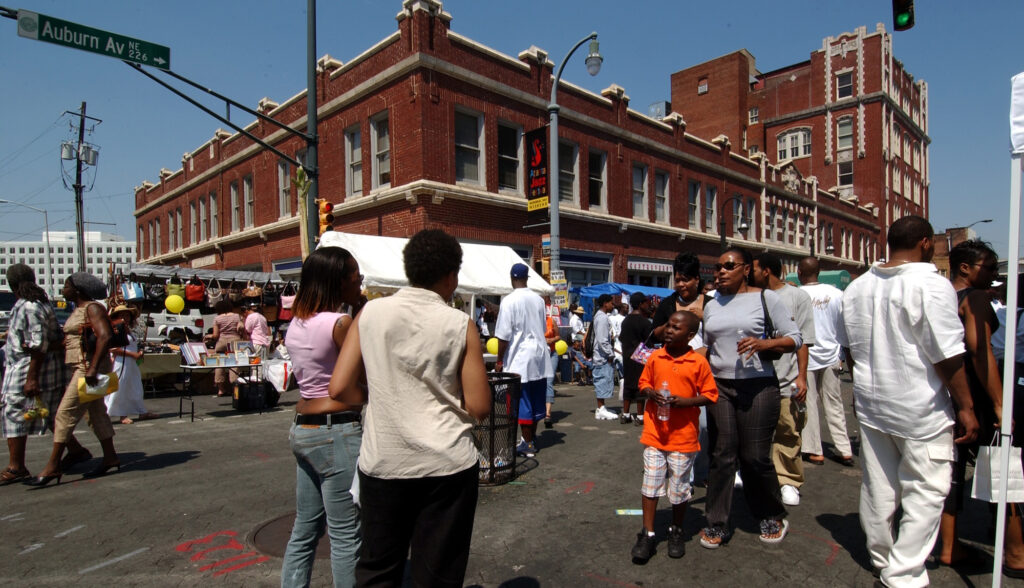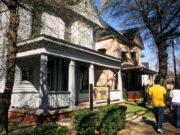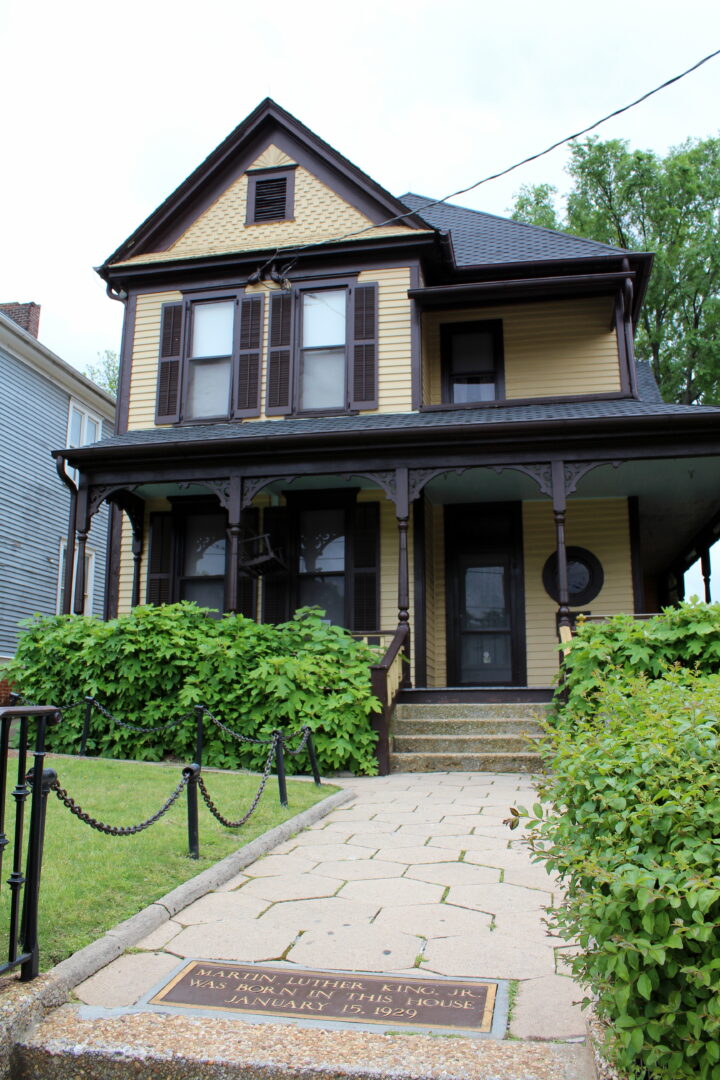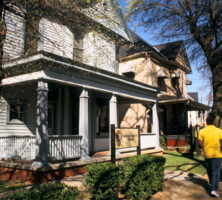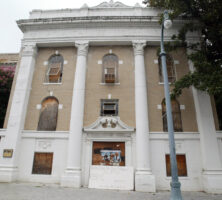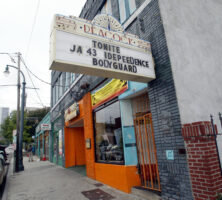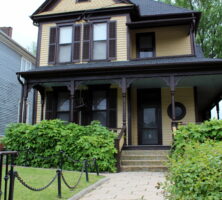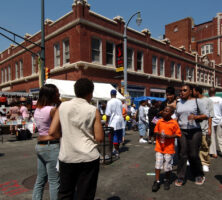Extending less than two miles eastward from Peachtree Street, Auburn Avenue was the commercial, cultural, and spiritual center of African American life in Atlanta prior to the civil rights movement.
“Sweet Auburn” boasted a concentration of Black-owned businesses, entertainment venues, and churches that was unrivaled elsewhere in the South. Its bustling retail trade and wealthy business owners earned the street a national reputation for African American finance and entrepreneurial zeal. In 1956 Fortune magazine memorably described Auburn Avenue as “the richest Negro street in the world.”
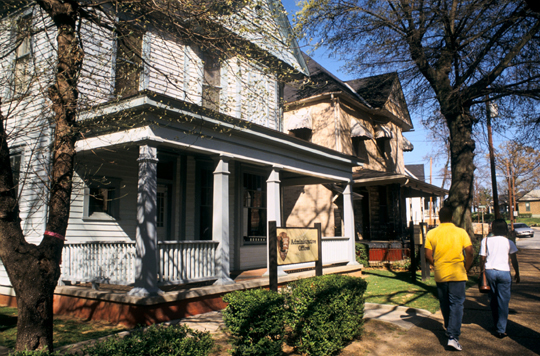
Sweet Auburn’s Golden Era
Originally called Wheat Street, the road was renamed in 1893 at the request of white petitioners who believed Auburn Avenue had a more cosmopolitan sound. During the next two decades, as restrictive Jim Crow legislation was codified into law, the city’s African American population became confined to the area between downtown and Atlanta University and to neighborhoods on the city’s east side, known today as the Old Fourth Ward. It was during this period that Auburn Avenue first achieved prominence as a commercial corridor and became home to the city’s emerging Black middle class.
Although composed mostly of small businesses, Auburn Avenue was also home to what historian Gary Pomerantz describes as Atlanta’s “three-legged stool of Black finance.” The first of these institutions was founded by Alonzo Herndon, a freedman who became the city’s first Black millionaire. After earning a modest fortune as the owner of a barbershop on Peachtree Street, Herndon founded the Atlanta Life Insurance Company in 1905. Six years later an enterprising Texan named Heman Perry formed a second Black insurance company, Standard Life. Citizens Trust Bank formed the third leg of the city’s Black financial stool, extending credit to Black homeowners and entrepreneurs who were underserved by the city’s white lending institutions. Because Auburn Avenue’s financial institutions amounted to a consolidation of African American wealth unique for its time, Black Atlantans referred to the street as “Sweet Auburn.” Coined by John Wesley Dobbs, a civic leader and the neighborhood’s unofficial “mayor,” the name reflected the avenue’s prominence as a national center of Black commerce.
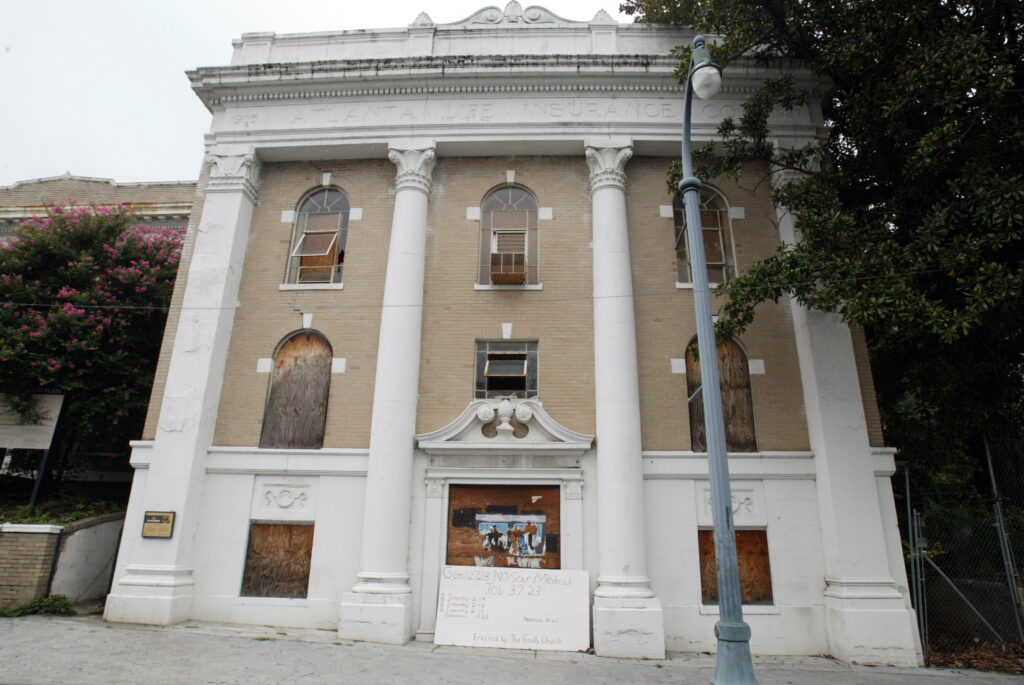
But Auburn Avenue was not simply a place to do business. Black Atlantans worshipped at Auburn’s many churches, including Ebenezer Baptist Church, where three generations of Martin Luther King Jr.’s family were pastors, and Big Bethel African Methodist Episcopal Church; dined at the legendary Ma Sutton’s; and spent late nights listening to ragtime at the famous Top Hat Club (later the Royal Peacock). The National Association for the Advancement for Colored People (NAACP), the Odd Fellows, the Masons, and the National Urban League maintained offices on Auburn Avenue, which was also home to the nation’s first successful Black-owned daily newspaper, the Atlanta Daily World. Whether for work or play, Auburn Avenue was the center of African American life in Atlanta.
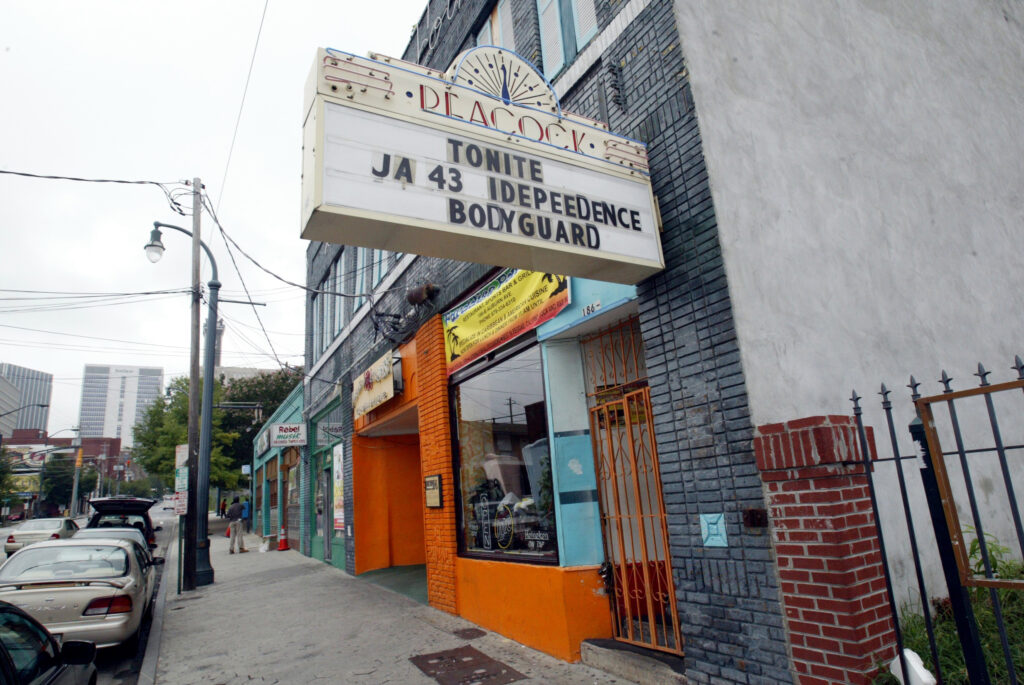
Civil Rights Era and Beyond
Ironically, Auburn’s civic activism led to its undoing. As the NAACP and local voting-rights organizations, from their Sweet Auburn offices, lobbied state and local governments for an end to segregation, and as native son Martin Luther King Jr., who was born at 501 Auburn Avenue, led the crusade for civil rights before a national audience, the street began its steep decline. With the legal barriers to integration removed, many Auburn shopkeepers moved their businesses to other areas of the city, and residents began migrating to Atlanta’s west side. At the same time the street was bisected by the construction of the Downtown Connector. Once vital and vibrant, the community’s fabric began to tear as Sweet Auburn fell victim to disinvestment and neglect. “It turned into a decaying memorial to a bygone era,” observes Gary Pomerantz, “a necessary though regrettable price for freedom.”
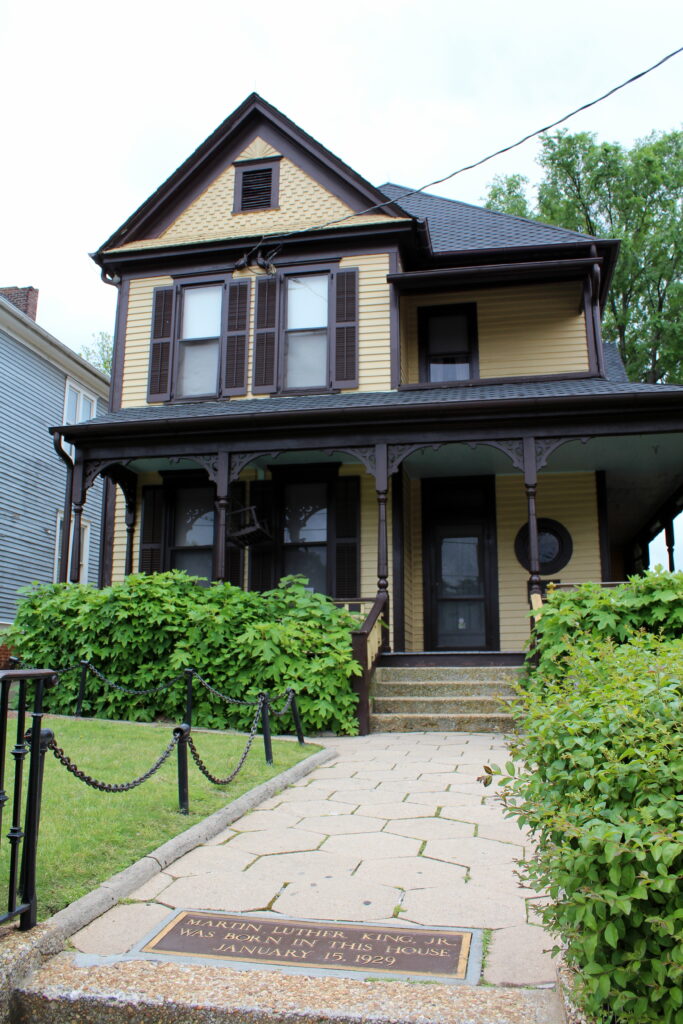
Despite repeated attempts at renewal, Auburn Avenue remains a model of urban blight. A revitalization plan undertaken by Atlanta mayor Maynard Jackson in the 1970s failed to stem the neighborhood’s decline, and his successors have not made a sustained commitment to the neighborhood’s welfare. Auburn’s designation as a national historic landmark in 1976 and the construction of the Martin Luther King Jr. Center for Nonviolent Social Change and the Martin Luther King Jr. National Historic Site in the 1980s encouraged hopes that the neighborhood might be revitalized, but those expectations have gone unfulfilled. While these sites are among the largest attractions in the city, few of the more than 600,000 annual visitors (as of 2005) have ventured farther down the block for dining or entertainment.
Past failures notwithstanding, residents and advocates have not given up on Sweet Auburn. In 1984 civil rights leader Hosea Williams founded the Sweet Auburn Heritage Festival, which offers entertainment, food, art, and children’s activities along Auburn Avenue each year. As of 2006, a $45 million redevelopment plan to create thousands of square feet of retail space and hundreds of condominiums, spearheaded by the historic Big Bethel African Methodist Episcopal Church, suggests that the community is poised for renewal. Moreover, the area has been designated a “tax allocation district,” meaning that potential developments would enjoy municipal financial support. While Sweet Auburn’s future remains uncertain, its supporters believe that it is prepared to regain its former glory.
